-
Elemente der Naturwissenschaft2002,2002Die chemische Strukturformel Ein totes Dokument für die Archive oder ein notwendiges Hilfsmittel auf dem Wege zu einem Substanzverständnis? Axel Zeeck Die chemische Strukturformel einer reinen Substanz gibt Auskunft darüber, wie die Atome der enthaltenen Elemente zueinander und im Raum angeordnet sind und welche Qualität die Bindungen... read more
-
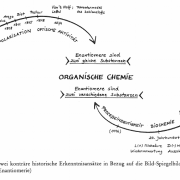 Elemente der Naturwissenschaft2002,2002Optische Aktivität von Kohlenstoffverbindungen Handeln und Erkennen im Wechsel Albert Pröbstl Summary In the polarity of action and perception in chemistry the emphasis seems to be on action. Several stages in the development of the concepts of ‘Optical Activity’ and ‘Chirality’ since the 17th century show that physical experiments (... read more
Elemente der Naturwissenschaft2002,2002Optische Aktivität von Kohlenstoffverbindungen Handeln und Erkennen im Wechsel Albert Pröbstl Summary In the polarity of action and perception in chemistry the emphasis seems to be on action. Several stages in the development of the concepts of ‘Optical Activity’ and ‘Chirality’ since the 17th century show that physical experiments (... read more -
Elemente der Naturwissenschaft2002,2002Arbeitsgruppen Pigmente für die Malerei - Phänomenologische Materiekunde Theodor Bolsinger, Chemiker, ehemals Ciba Basel Mit käuflichen, fixfertigen Malfarben zu arbeiten ist heute so zur Selbstverständlichkeit geworden, dass die Benutzer meistens Mühe haben, sich den enormen Aufwand vorzustellen, der einst z.B. im Atelier eines jan von Eyck... read more
-
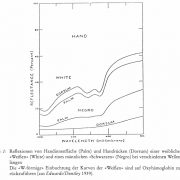 Elemente der Naturwissenschaft2002,2002Biochemie und Physiologie der Farbstoffe der menschlichen Haut Klaus-Peter Endres Summary The variation in colour of the human skin is mediated by the coloured substances melanin and haemoglobin, and to a lesser degree by carotene. Spectrophotometric analysis reveals that the distribution of these three pigments within the human organism... read more
Elemente der Naturwissenschaft2002,2002Biochemie und Physiologie der Farbstoffe der menschlichen Haut Klaus-Peter Endres Summary The variation in colour of the human skin is mediated by the coloured substances melanin and haemoglobin, and to a lesser degree by carotene. Spectrophotometric analysis reveals that the distribution of these three pigments within the human organism... read more -
Elemente der Naturwissenschaft2002,2002Cholesterin und Glyceridfette Eine Polarität innerhalb der Lipidsubstanzen Martin Errenst Summary This paper is about the relationship of cholesterol to human physiology. Cholesterol is synthesised by the human body. On the other hand, triglyceride fats are required in our diet because our body cannot synthesise essential fatty acids.... read more
-
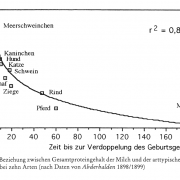 Elemente der Naturwissenschaft2002,2002Zur Biochemie der Milch von Tier und Mensch Proteine, Lipide und Kohlenhydrate der Milch in ihrem biologischen Kontext Daniel Braun Summary The article reviews and extends interspecific correlations between the main components of milk of different mammalian species and certain aspects of their biology. Proteins are correlated with... read more
Elemente der Naturwissenschaft2002,2002Zur Biochemie der Milch von Tier und Mensch Proteine, Lipide und Kohlenhydrate der Milch in ihrem biologischen Kontext Daniel Braun Summary The article reviews and extends interspecific correlations between the main components of milk of different mammalian species and certain aspects of their biology. Proteins are correlated with... read more -
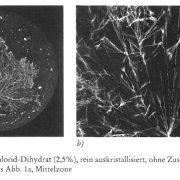 Elemente der Naturwissenschaft75,2001ELEMENTE DER NATURWISSENSCHAFT 75 2/2001 Einflüsse unterschiedlicher Behandlungen auf die biologische Wertigkeit von Kuhmilch Untersuchungen mit der Methode der Empfindlichen Kristallisation Haijo Knijpenga Summary The biological value of cow’s milk after pasteurisation and homogenisation was investigated by sensitive crystallisation.... read more
Elemente der Naturwissenschaft75,2001ELEMENTE DER NATURWISSENSCHAFT 75 2/2001 Einflüsse unterschiedlicher Behandlungen auf die biologische Wertigkeit von Kuhmilch Untersuchungen mit der Methode der Empfindlichen Kristallisation Haijo Knijpenga Summary The biological value of cow’s milk after pasteurisation and homogenisation was investigated by sensitive crystallisation.... read more -
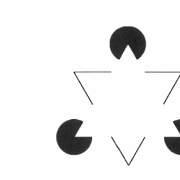 Elemente der Naturwissenschaft75,2001ELEMENTE DER NATURWISSENSCHAFT 75 2/2001 Getting rid of Metaphysics Ronald H. Brady When Immanuel Kant was awakened from what he termed his «dogmatic slumbers» by reading David Hume, he decided that there could be no justification for the metaphysical speculations of his day, and set out to discredit them. History has judged him correct... read more
Elemente der Naturwissenschaft75,2001ELEMENTE DER NATURWISSENSCHAFT 75 2/2001 Getting rid of Metaphysics Ronald H. Brady When Immanuel Kant was awakened from what he termed his «dogmatic slumbers» by reading David Hume, he decided that there could be no justification for the metaphysical speculations of his day, and set out to discredit them. History has judged him correct... read more -
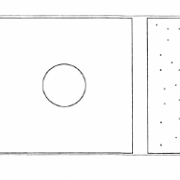 Elemente der Naturwissenschaft75,2001ELEMENTE DER NATURWISSENSCHAFT 75 2/2001 Der Begriff des Gegenraumes Oliver Conradt Summary The concept of counter space or negative space is developed from Goethe’s concept of space as described by the young Rudolf Steiner. Whilst the three dimensions of space are based on the relation between two separated objects, the three... read more
Elemente der Naturwissenschaft75,2001ELEMENTE DER NATURWISSENSCHAFT 75 2/2001 Der Begriff des Gegenraumes Oliver Conradt Summary The concept of counter space or negative space is developed from Goethe’s concept of space as described by the young Rudolf Steiner. Whilst the three dimensions of space are based on the relation between two separated objects, the three... read more -
 Elemente der Naturwissenschaft75,2001ELEMENTE DER NATURWISSENSCHAFT 75 2/2001 Doppeldrehung und Polarisation Johannes Grebe Gestalt wirkt auf Gestalt.I Rudolf Steiner Summary Based on a discovery of Haidinger, cyclic sequences of images as a result of an interplay of the optical elements analyser, transformer and polarizer are investigated. The change of the image... read more
Elemente der Naturwissenschaft75,2001ELEMENTE DER NATURWISSENSCHAFT 75 2/2001 Doppeldrehung und Polarisation Johannes Grebe Gestalt wirkt auf Gestalt.I Rudolf Steiner Summary Based on a discovery of Haidinger, cyclic sequences of images as a result of an interplay of the optical elements analyser, transformer and polarizer are investigated. The change of the image... read more